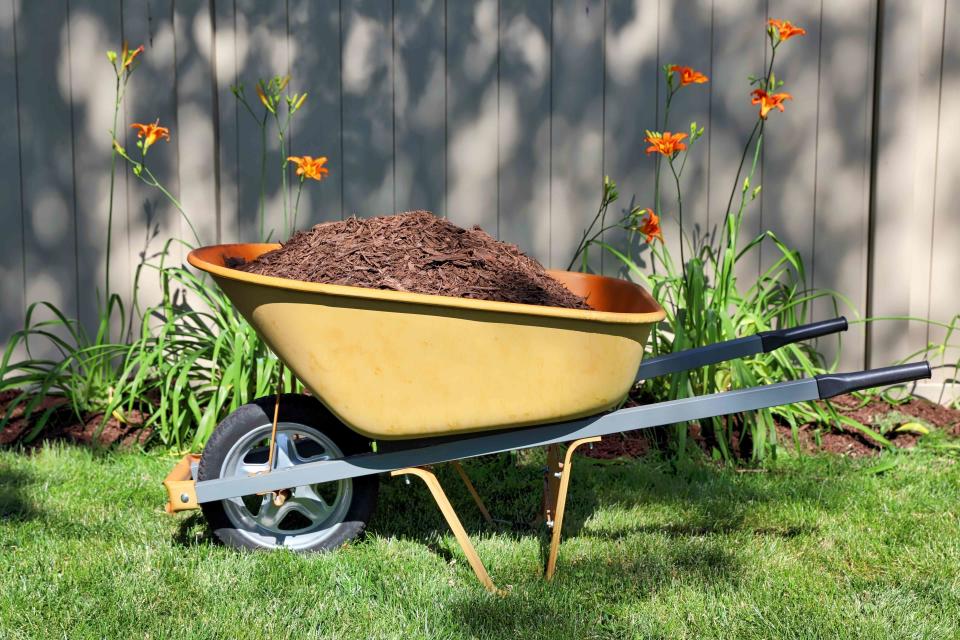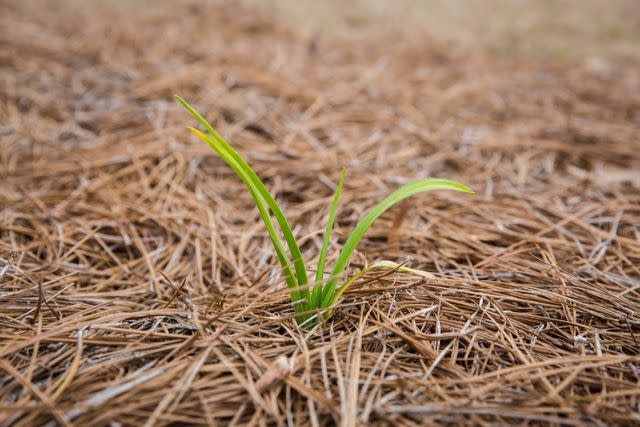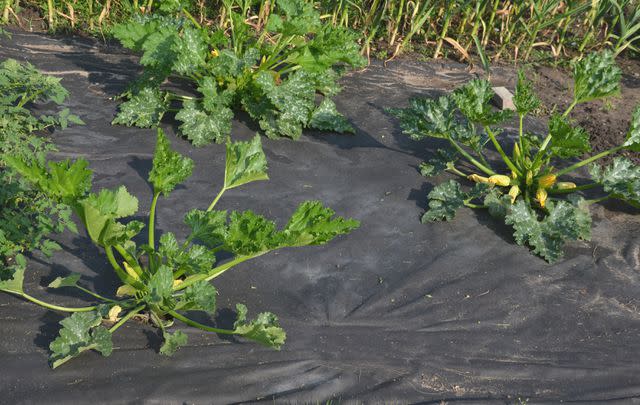How Much Mulch Do You Need? Here’s How To Figure It Out
Plus learn about mulch types and which mulch is right for your needs.

Getty Images
Mulch is material that is used to cover flower beds. It can help control weeds, insulate plants and roots, maintain moisture levels, prevent erosion, and even simply improve aesthetics. Mulch will fall into two broad varieties: organic and inorganic. Determining which mulch type is best for your yard is often best informed by your objectives and budget. Here we’re unpacking everything you need to know about selecting the right mulch for the job, including how much you’ll need. While you can certainly do the math on your own, we’ve also provided helpful online mulch calculators to make quick work of the task.
Related: Here's Why You Shouldn't Put Broken Up Eggshells Directly In Your Soil
The Different Types Of Mulch
Organic Mulch
These mulches have the benefit of amending the soil with nutrients but, as natural elements, they will decompose over time and need to be replaced in order to continue having the continued effect in your yard. When replacing mulch, it’s important not to simply add new mulch over the old mulch but, instead, remove old mulch before applying the fresh batch. Mulch packing can lead to fungal issues among other concerns.
Bark: Bark mulch is made of a tree’s outer bark. It will decompose rather quickly, which is ideal for newer plants as nutrients will be added to the soil at a faster rate. It’s a good option for moisture retention too.
Compost: If you’re looking for mulch primarily to amend the soil with nutrients, consider compost. It likely won’t add to your garden’s aesthetic though, so bear that in mind.
Grass Clippings: In order to use grass clippings as mulch effectively, they should be dried first.
Pine Straw: Pine straw has more longevity than many other organic mulch types and tend to stay put. This is one of our picks for the best mulch if you live in an area where it’s available.
Straw: Straw is one of the more inexpensive choices but, because it’s a lighter material, it can more easily be displaced by wind. It decomposes quickly.

Charise Wilson Photography/Getty
Pine strawInorganic Mulch
Opting for an inorganic mulch can improve aesthetics while working hard to control weeds. Its one pitfall is that it doesn’t add nutrients back into the soil. It won’t erode like organic materials, which means it will last much longer before needing to be replaced.
Landscape Fabrics: The benefit of landscape fabric is its weed-discouraging prowess combined with its permeability. Essentially, it keeps weeds out (or smothers existing weeds) while still allowing water and fertilizer to filter into the soil. It needs to be secured so weeds don’t manage to push it up out of the way of their growth.
Plastic Mulch Film: Plastic mulch typically comes in black or silver varieties, both of which should be covered by another variety of mulch in order to avoid erosion and plant damage. Both varieties do a good job at preventing water loss, though it’s not permeable which means water can’t get through it and down into the soil once the film is placed. They can help increase soil temperature in the spring though they can become too hot if left uncovered when the sun in high in the summer months. Black plastic will do a better job at controlling weeds than clear or silver plastic.
Rocks or Stones: This is one of the most permanent options. Consider applying a layer of landscape fabric below the rocks or stones to avoid weeds from creeping in. Once you have this mulch set, you won’t want to move it as it’s both heavy and expensive to replace.

beekeepx/Getty
Landscape FabricHow To Calculate How Much Mulch You Need
How Mulch Is Sold
Mulch is typically sold by cubic yard in bags but it can also be sold by the yard. If you’re opting for a by-the-yard purchase, mulch will likely be delivered in bulk that you’ll then have to shovel to the appropriate spot which can be a laborious process. Depending on how much you’ve purchased, you might want to enlist the help of family and friends to get the job done. Bagged mulch is more easily dropped in various locations throughout the yard so you don’t have to shovel or do too much wheel-barrow work. The downside is that bagged mulch is typically more expensive.
Decide How Much You'll Need
To calculate how much mulch you’ll need, start by measuring the square footage of your garden bed. You’ll then need to convert that to cubic yards while taking into consideration the intended mulch depth. Typically two-to-four inches deep will be sufficient. For more permeable materials like bark you can opt for four inches, but compost should be kept to one-to-two inches. One cubic yard of mulch will cover 324 square feet with a one-inch depth. The equation should look like this:
The Formula
[Square footage of bed] x [mulch depth in inches] / 324 = amount of mulch in cubic yards
Sites like Lowe’s, The Mulch Center, and Gardener’s Supply Company have calculators to help you easily determine the amount you’ll need to get the job done. You’ll simply drop in the dimensions of your garden bed, plus the depth of mulch you’re looking for and it will return the proper amount.
For more Southern Living news, make sure to sign up for our newsletter!
Read the original article on Southern Living.

